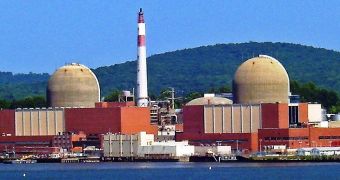After the devastating nuclear accident from Fukushima, companies and individuals have taken into consideration the development of renewable, clean sources of energy that wouldn't put in danger the lives of thousands of people.
It seems that, if Indian Point Energy Center doesn't renew its license by 2015, it might be replaced by several other sources of sustainable power.
This seems like a great alternative, taking into consideration the massive impact the Fukushima disaster had upon the public opinion.
Representatives from Natural Resources Defense Council and Riverkeeper conducted a study which revealed that safer ways of producing energy are available for development in the area, at modest costs.
Also, according to the information provided by the study, if the Indian Point plant is closed, the population won't suffer at all, due to a energy generation surplus.
Even in this context, researchers state the fact that officials still have enough time, until 2020, to come up with new electric capacity, in order to deal with reliability requirements.
After 2020 Indian Point’s 2,000 MW of electric capacity will have to be replaced with safer alternatives.
So far, the community has engaged its efforts in developing more than 6,000 MW of green energy projects, which rely on clean sources such as the wind and sun.
These strategies were already taken into account and included in plans for the near future.
Also, authorities intend to use 8,000 MW of power coming from innovative transmission lines. The generated power would go to New York City's inhabitants from upstate New York and other regions.
Also, this idea includes 660 MW Hudson Transmission Line which have already been approved, and the usage of another approximately 2,000 MW of lines that are waiting for approval as we speak.
The strategy expands further more, as officials are determined to exploit 1,000 MW that would come out of increased efficiency from already existing natural gas plants in New York City.
Authorities plan to come up with new technological processes that will make possible the reduction of polluters, such as gas emissions while increasing the power output.
Appealing to renewable sources of energy seems like the right thing to do.
Researchers warned the authorities that a potential catastrophe at Indian Point Center similar to the one that took place at Fukushima would cost 10 to 100 times more than the Japanese government had to pay to clean-up after the disaster.
“Fortunately, we have a wealth of safer energy sources ready to go that can fully replace the power from Indian Point. When we consider the human and economic costs of a nuclear crisis in New York, and the host of benefits from investing in clean energy, the solution is common sense,” said NRDC President Frances Beinecke.

 14 DAY TRIAL //
14 DAY TRIAL //